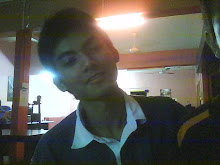
Coffee is a brewed beverage prepared from roasted seeds, commonly called coffee beans, of the coffee plant. Caffeinated coffee has a stimulating effect in humans. Today, coffee is one of the most popular beverages worldwide.Coffee was first consumed in the ninth century, when it was discovered in the highlands of Ethiopia. From there, it spread to Egypt and Yemen, and by the 15th century, had reached Azerbaijan, Persia, Turkey, and northern Africa. From the Muslim world, coffee spread to Italy, then to the rest of Europe, to Indonesia, and to the Americas.
CaffÈ Latte
[caf-AY LAH-tay]
Espresso with steamed milk and in some shops, a small cap of foam. It has less foam than a cappuccino.
Definitions blur easily here.
In Australia: " 'Latte' gets you a glass with a shot of espresso and lots of milk and some foam - half way between a flat white and a cap. Seems to have originated as the breakfast drink of Sydney commuters. Has become infinitely fashionable due to the need for brass glass holders, which only the fashionable coffee houses have (the rest of us wrap the glass in a napkin)"
CaffÈ Mocha [caf-AY MO-kah]
A term of no small controversy. Depending upon where you are, ordering a 'mocha' might get you a 'latte' or a cappuccino with chocolate syrup or hot cocoa. On the other hand, it might just send the barista thermonuclear -- especially if the word 'mocha' is not on the menu.
Mocha was a port in Yemen -- a major coffee-growing country located in southwest Asia at the southern tip of the Arabian peninsula -- and "it has NOTHING to do with chocolate!!!!!"
One contributor states "However, my dictionary lists Mocha as 'a flavoring obtained from a combined infusion of coffee and chocolate' usage as dating from the early 19th century (circa 1815 it says)"
For the record, the American Heritage Dictionary gives the following 5 definitions:
Mo·cha n.
1. A rich, pungent Arabian coffee.
2. Coffee of high quality.
3. A flavoring made of coffee often mixed with chocolate.
4. A soft, thin, suede-finished glove
leather usually made from sheepskin.
5. Color. A dark olive brown.
Starbucks defines caffÈ mocha as "enough good quality chocolate syrup to cover the bottom of the cup, 1 shot of espresso fill with steamed milk top with a dollop of whipped cream and lightly sprinkle with cocoa powder".
Finally, one reader sends us "When I was in New Zealand a popular coffee was a 'mochachino' which was made by adding hot chocolate to espresso, it was quite foamy (as foamy as the hot chocolate). " The term 'mochacino' (aka 'moccaccino') is also used some places in the US.
The best advice here is to check the menu before ordering or ask for a "cappuccino/latte with chocolate syrup".

Cappuccino [cap-uh-CHEE-no]
A shot of espresso with the remainder
being 50% steamed milk and 50% milk foam/froth. An alternative description is 1/3 espresso, 1/3 steamed milk, 1/3 foamed milk. But again, this depends very much on the maker. Many places use more steamed milk and less froth. "Cappuccino is essentially a latte topped with milk FOAM." Another contributor states "The foam should follow the milk to the cup naturally. It is added with a spoon then it is no good."
But just the opposite is true in other places. "I just started working as a barista, here in Berkeley,about a month ago. When I was shown how to make Cappuccino's, I was told that a Cappuccino has no steamed milk only foam."
Finally, some interesting history on the word cappuccino, according to the American Heritage Dictionary:
"The history of the word cappuccino exemplifies how words can develop new senses because of resemblance that the original coiners of the terms might not have dreamed possible. The Capuchin order of friars, established after 1525, played an important role in bringing Catholicism back to Reformation Europe. Its Italian name came from the long, pointed cowl, or cappuccino, derived from cappuccino, "hood" that was worn as part of the order's habit. The French version of cappuccino was capuchin (now capucin), from which came English Capuchin. The name of this pious order was later used as the name (first recorded in English in 1785) for a type of monkey with a tuft of black, cow like hair. In Italian cappuccino went on to develop another sense, "espresso coffee mixed or topped with steamed milk or cream" so called because the color of the coffee resembled the color of the habit of a Capuchin friar. The first use of cappuccino in English is recorded in 1948 in a work about San Francisco."

Espresso Macchiato [mock-e-AH-toe]
Some say this is espresso with about
a half inch of milk foam (no steamed milk). But some strongly disagree. One enthusiast writes of the above definition: "Surely not. Macchiato is a dash of milk or cream in espresso." Another writes "the chap who serves me espresso, and who has been roasting coffee and selling and leasing machines for several years ....tells me that Macchiato is made with half-and-half."
From Australia: " 'Macchiato' has two variations here - long and short. 'Short' is an espresso (in the mandatory micro cup) with just a dash of milk. This is the default at most trad. Italian mum & dad restaurants. 'Long' is a glass with two shots of espresso, and small amount of milk. The peak of macchiato making is to pour the milk in so slowly that it never makes it to the bottom of the glass. The resulting layered drink has been known to inspire fear in the novice drinker. This the default at coffee houses. Both of these _seemed_ to have started out in small glasses (about 175ml) but the fashionable have demanded ever larger glasses - of about 375ml.
Starbucks defines Espresso Macchiato as "1 shot of espresso in a demitasse [topped with] a small dollop of foamed milk.




